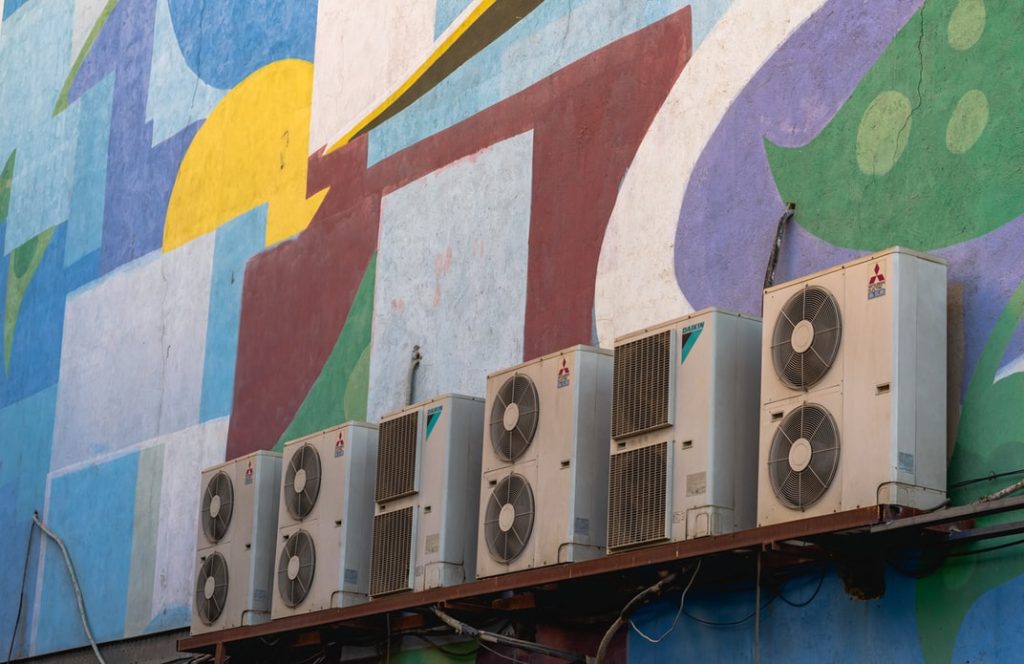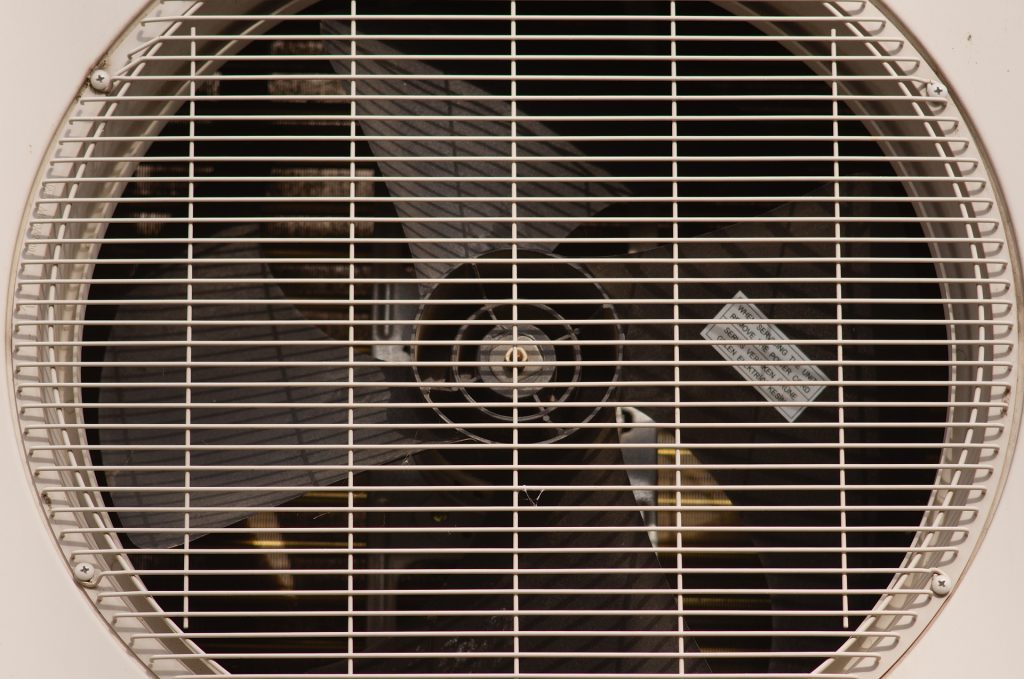The central air vs. mini-split debate uncovers many factors worth considering as you choose an air conditioner. Each system has its own energy efficiency stipulations, price range, and more. In this post, we’ll explore these points to help you decide whether a central or mini-split air conditioner is ideal for your home.
Central Air vs. Mini-Split: The Basics

Let’s start by discussing what each unit actually is. To learn about all the various types of air conditioners out there, check out this post.
Central Air Conditioners
A central air conditioner transports air throughout the rooms in your house via a series of ducts and fans. There are two types of central air conditioners: packaged and split-system (not to be confused with mini-split). The former keeps the core cooling components in a single outdoor cabinet while the latter splits them between an indoor unit and an outdoor one.
You’ll know you have a central air conditioner based on the characteristic outdoor cabinet that usually sits on a concrete slab near your home.
Mini Split Air Conditioners
Mini-split air conditioners also have an outdoor unit. Rather than connecting to a series of ducts, however, mini-split air conditioners lead to indoor wall-mounted units (known as evaporators) that disperse the cool air. It’s these evaporators that will typically give away that an air conditioner is a mini-split.
Due this type of air conditioner’s lack of ducts, you’ll often hear experts refer to them as “ductless” units.
Central Air vs. Mini-Split: 7 Things To Consider
Now that you know how central and mini-split air conditioners differ in terms of design, let’s discuss the various considerations associated with choosing one over the other.
Cost Of Ductless Mini-Split vs. Central Air
According to Home Advisor, Americans spend between $3,778 and $7,427 installing central units. The same site lists mini-split units as costing between $2,000 and $14,500. Why the huge range for mini-split air conditioners? Well, there’s a bit more flexibility in terms of what you can purchase. A compressor and single evaporator won’t cost much. As you begin adding evaporators and other components to create a custom solution (which may be necessary for whole-house cooling), your costs will rise. A properly-sized central air conditioner, meanwhile, will be capable of cooling your home without the need for additional components – as long as you already have ductwork. If you don’t, a mini-split unit (which requires a mere three-inch hole to pass cables through) will almost certainly be cheaper.
Aesthetics
Central and mini-split air conditioners alike have large outdoor components that can be unsightly if you don’t use clever camouflage techniques. While central air conditioners are largely invisible from inside your home, however, mini-split units have evaporators that attach to your interior walls. If this is an issue, you may want to lean towards a central unit.
Energy Consumption
Air conditioners use quite a bit of energy. Central units are within the range of 3000-3500 watts per hour while mini-split units can run at about 2,000 watts per hour at peak cooling. If you don’t need much cooling capacity, you’ll benefit from a mini-split air conditioner, which will be much cheaper to run.
Capacity Required
Choosing a correctly-sized air conditioner (check out our Lennox AC reviews and “Trane Vs. Carrier Vs. Lennox” reviews) is key for avoiding airflow issues. Note that air conditioners in Phoenix and other very warm cities typically need more capacity than in cooler regions of the United States. Central air conditioners are generally greater capacity, although you can find capable mini-split units. Keep in mind that ductless air conditioners in cities like Phoenix may end up costing more as you’ll likely need several evaporators, potentially impacting the average electric bill in Arizona for those using this type of system.
Do You Need Heating, Too?
If you live in a place that gets cold, you’ll probably want an HVAC system that cools and heats. This is possible with mini-split heat pumps, which look a lot like regular old mini-split air conditioners but have some important distinctions you can read about here. You can also find heat pumps that behave like central air conditioners but these are better suited towards moderate climates. If you need robust cooling or heating during extreme months, a heat pump will be inefficient.
Do Your Cooling Needs Vary By Room?
One of the coolest features of mini-split air conditioners is the ability to set the temperature for each evaporator. Just imagine – you could have one evaporator per room with each set to its occupants’ preference. This isn’t possible with central air conditioners; as far as climate control goes with those, you’re limited to closing vents to rooms that don’t need as much cooling. This is therefore a central part of the central air vs. mini-split debate.
Would A Noisy Air Conditioner Be Problematic?
Central air conditioners can be loud. You’ll hear the outdoor unit kicking up, with the noise reverberating through your metal ducts. The outdoor component of a mini-split system isn’t silent but you can place it further away from your house. Its hoses also don’t carry sound as well as metal air conditioner ducts would.
Mini-Split vs. Central Air: Conclusion
Mini-split and central air conditioners are among the most popular types out there. Which one is best for you depends on factors such as budget and your home’s cooling needs. We hope this guide has been helpful in showing you what to consider. If you live in the Phoenix area and are still unsure, feel free to give us a call at American Home Water and Air. We’ve been in the HVAC business for more than 30 years and would be happy to lend you a hand!
For more air conditioning, heating, and water filtration blogs, you can read these next articles on “How to Change Furnace Filters” and “How to Get Rid of Mold in Water Softener Brine Tank“.
Frequently Asked Questions
Are mini-splits better than central air?
There’s no objective winner between the two. It all depends on factors such as your cooling needs and budget. The right air conditioner will meet your needs with the greatest level of efficiency.
Do mini-splits increase home value?
If you have a historic home, mini-splits can preserve value due to their non-invasive installation. All you need is a three-inch hole rather than full ductwork like with a central air conditioner.
Is a mini-split considered central air?
Mini-split air conditioners behave somewhat like central air units in that they include a large exterior unit. It’s important that you don’t confuse them with split-system air conditioners, however, which are more closely related to central air units in that both require ductwork while mini-split systems do not.









